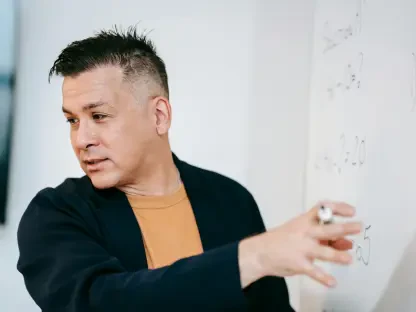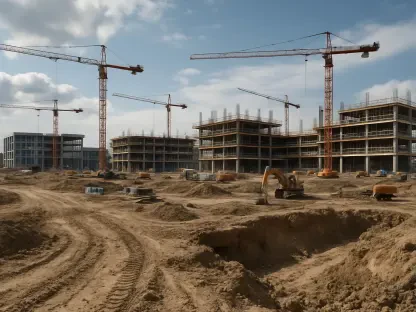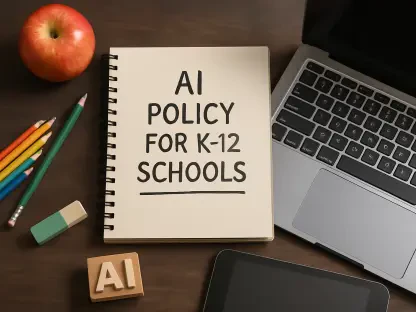The transition from high school to adulthood often feels like stepping off a structured path into an uncharted wilderness, where young individuals must navigate a maze of new responsibilities and uncertainties without the safety net of familiar routines. For many, the challenges of this phase eclipse the struggles of earning a diploma, revealing a stark gap between academic achievement and real-world stability. This article delves into the compelling journey of Raiden, an 18-year-old from Oregon, whose experiences encapsulate the hurdles of post-graduation life. Tracked as part of a long-term educational project by Oregon Public Broadcasting, Raiden’s story offers a poignant lens through which to examine whether sheer resilience can triumph over the myriad obstacles that emerge after high school. From personal battles with learning difficulties to systemic disruptions, his narrative highlights the complexities of this critical life stage. It prompts a deeper exploration into how much individual grit, paired with external support, can shape a successful transition into independent adulthood.
Early Struggles and Systemic Barriers
Raiden’s early years in the education system were marked by significant challenges that set a difficult tone for his academic journey, reflecting a broader struggle many students face when personal needs collide with inflexible structures. Diagnosed with ADHD, he found it hard to maintain focus, a problem exacerbated by frequent school changes across districts in Oregon and Washington. These moves disrupted any chance of building consistent peer relationships or adapting to steady academic expectations. As early as first grade, Raiden expressed frustration with school, finding it overly demanding and lacking in balance. This initial resistance foreshadowed years of difficulty, where personal barriers intertwined with environmental factors, creating a persistent obstacle to engagement and progress.
Beyond personal challenges, systemic issues further complicated Raiden’s path through education, amplifying the impact of his individual struggles during critical developmental years. The COVID-19 pandemic struck a severe blow, as the abrupt shift to online learning in 2020 stripped away the in-person support that was vital for his success. Isolated from teachers and classmates, Raiden’s grades suffered dramatically, mirroring a national trend of academic setbacks during this period. His mother, Angela, observed how the lack of direct interaction and the complexity of virtual platforms left him disengaged and unsupported. This external disruption revealed how fragile academic progress can be for students already grappling with internal difficulties, underscoring the need for robust systems to mitigate such widespread challenges.
Transformative Interventions and Academic Success
A pivotal moment in Raiden’s journey came with his enrollment in the Oregon Youth Challenge Program (OYCP), a military-style boarding school in Bend that offered a stark contrast to traditional educational environments. The program’s rigid structure, complete with uniforms, daily drills, and strict behavioral expectations, provided the discipline he had previously lacked. Within just five months, Raiden earned an impressive 10 credits, surpassing the typical yearly progress of most high school students. This achievement allowed him to graduate a year early from Centennial High School in June 2024, a testament to how alternative education models can serve as lifelines for at-risk youth. The success at OYCP highlights the potential of tailored interventions to unlock hidden capabilities in students who struggle within conventional settings.
The impact of OYCP extended beyond mere academic gains, reshaping Raiden’s approach to responsibility and focus in ways that traditional schools could not. Program director Frank Tallman emphasized that such structured environments are designed specifically for students unlikely to thrive under standard conditions, offering them a chance to rebuild confidence and direction. For Raiden, the disciplined setting acted as a catalyst, proving that with the right framework, even those furthest from success can achieve remarkable turnarounds. This transformation suggests that educational systems must diversify their approaches, recognizing that one-size-fits-all models often fail to address the unique needs of every student, particularly those facing compounded personal and academic barriers.
Navigating the Void After Graduation
Despite the triumph of early graduation, Raiden’s story took a challenging turn as he stepped into the unstructured world beyond high school, revealing a critical gap in support for young adults during this transition. Without the daily guidance of school or the strict regimen of OYCP, he has struggled to find stable footing, cycling through multiple jobs with little satisfaction. Night shifts at a warehouse, among other roles, have left him frustrated and searching for purpose, a plight shared by many recent graduates who find themselves adrift without clear direction. This phase underscores a broader societal issue: the lack of mechanisms to help young adults translate academic milestones into sustainable life paths, leaving them vulnerable to losing momentum.
The concerns of Raiden’s mother, Angela, further illuminate the anxiety surrounding this uncertain period, as she fears he might falter without a defined trajectory or ongoing support. Her worries resonate with countless families who watch their children grapple with the sudden independence that follows high school, often without adequate resources to guide them. Raiden’s experience highlights how the absence of structured post-graduation programs can undo years of hard-earned progress, emphasizing the need for extended support systems. Whether through mentorship, career counseling, or accessible training opportunities, bridging this gap appears essential to ensuring that young adults do not simply survive the transition but thrive in it.
Aspirations Amidst Persistent Obstacles
Amid the uncertainty of post-high school life, a spark of hope emerges in Raiden’s dream of becoming an automotive mechanic, a goal that could potentially anchor his future if nurtured effectively. Angela believes that connecting education to a personal passion might be the key to overcoming his past academic struggles, as motivation tied to interest often fuels perseverance. However, significant hurdles stand in the way, including the prohibitive cost of college and lingering self-doubt from earlier educational challenges. This aspiration, while promising, tests the limits of individual resilience, raising questions about whether personal drive alone can surmount financial and systemic barriers without external intervention or accessible pathways.
Raiden’s challenges also reflect broader issues within Oregon’s educational landscape, where prolonged school closures during the pandemic contributed to widespread academic and behavioral setbacks for students. A reported 12% drop in on-track graduation metrics between 2019 and 2021 illustrates the scale of disruption, particularly for those like Raiden who were already at a disadvantage. His story prompts a critical examination of how systemic shortcomings compound personal obstacles, often leaving young adults to rely heavily on their own grit. Addressing these larger issues—through policy changes or enhanced support for vocational training—seems vital to ensuring that dreams like Raiden’s do not remain out of reach due to circumstances beyond individual control.
The Anchor of Family and Inner Strength
Family support has proven to be a cornerstone in Raiden’s journey, acting as a steady force amid the turbulence of academic and post-graduation challenges. Angela’s role as an advocate cannot be overstated; her determination to see him succeed, rooted in her own experience as a teenage mother who completed high school for his sake, has driven critical decisions like enrolling him in OYCP. This shared history of overcoming adversity creates a powerful bond, fueling a mutual commitment to progress. Such familial backing often serves as an emotional and practical buffer, offering young adults a foundation to fall back on when external structures fail, though it cannot fully substitute for systemic resources.
Equally important is the role of personal drive, which, when paired with family encouragement, can forge a formidable shield against the uncertainties of early adulthood. Raiden’s resilience, evident in his ability to rebound through structured intervention and harbor ambitions like becoming a mechanic, speaks to an inner strength that refuses to be extinguished by setbacks. Yet, this personal fortitude must be complemented by accessible opportunities and guidance to be truly effective. The interplay between individual determination and external support systems emerges as a crucial factor in navigating life after high school, suggesting that while resilience is a powerful tool, its success often hinges on the presence of a supportive framework to channel it effectively.
Building Bridges to Future Stability
Reflecting on Raiden’s path, it becomes evident that while personal resilience played a significant role in overcoming academic hurdles, the journey after high school demanded more than just individual effort. His early graduation in 2024, facilitated by the transformative structure of OYCP, stood as a remarkable achievement against a backdrop of personal and systemic challenges. However, the subsequent struggle to find stable employment and direction revealed a glaring need for continued guidance beyond the classroom. Angela’s persistent advocacy and Raiden’s own aspirations provided a vital push, yet the absence of post-graduation support systems often left them grappling with uncertainty. Moving forward, the focus must shift toward creating actionable solutions—such as expanded vocational programs, affordable education options, and mentorship initiatives—that can bridge the gap between high school success and adult stability. Only through such measures can the potential of resilient young adults be fully realized, ensuring that their hard-fought victories pave the way for enduring, meaningful futures.









